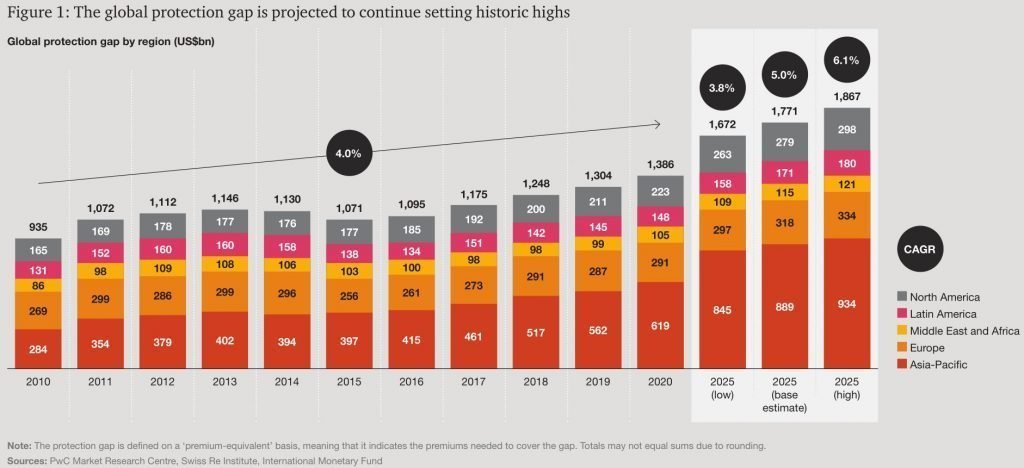The insurance industry is undergoing a major transformation, driven by the rise of insurtech — a fusion of insurance and technology. As we move toward 2025, the adoption of innovative technologies is expected to disrupt the industry even further, improving customer experiences, increasing operational efficiencies, and enabling new business models. In this article, we’ll explore the top insurtech trends and technologies that are shaping the future of insurance.
Artificial Intelligence (AI) and Machine Learning
AI in Claims Processing
Artificial Intelligence (AI) and Machine Learning (ML) are among the most transformative technologies in the insurtech landscape. These technologies are enhancing the efficiency and accuracy of claims processing by automating repetitive tasks, analyzing vast amounts of data, and predicting outcomes.
- Claims Automation: AI can instantly analyze claim reports and decide on payouts based on predefined parameters, reducing human error.
- Fraud Detection: AI’s ability to analyze patterns makes it particularly effective in identifying fraudulent claims, saving insurers millions in losses.
Personalized Insurance Products
Machine learning algorithms are enabling insurers to offer highly personalized insurance policies tailored to an individual’s needs and behaviors. By analyzing historical data and real-time information, AI helps insurers develop predictive models for individual risk profiles.
Blockchain Technology
Enhancing Transparency and Security
Blockchain technology has the potential to revolutionize the insurance industry by enhancing transparency, security, and trust. By leveraging decentralized ledgers, insurers can ensure that policyholders’ data is securely stored and cannot be tampered with.
- Smart Contracts: Blockchain allows for the automation of contract execution through smart contracts. These self-executing contracts can automatically trigger payouts once conditions are met, reducing the need for intermediaries.
- Data Security: The decentralized nature of blockchain ensures that policyholders’ personal and sensitive information is protected, reducing the risk of data breaches.
Cross-Border Transactions
Blockchain is also enabling seamless cross-border transactions. Insurers can eliminate the need for intermediaries and reduce costs associated with international claims settlements.

Internet of Things (IoT)
Telematics and Usage-Based Insurance
The Internet of Things (IoT) is creating new opportunities for insurers to collect real-time data and offer usage-based insurance products. For instance, in the auto insurance sector, IoT devices such as telematics can monitor driving habits and adjust premiums accordingly.
- Pay-as-You-Drive (PAYD): Insurers can track drivers’ behavior (e.g., speed, braking patterns, and mileage) to determine insurance premiums. Safe drivers are rewarded with lower premiums.
- Fleet Management: IoT-enabled fleet management allows insurers to monitor the condition of vehicles in real-time, reducing risks and improving underwriting accuracy.
Home Insurance
IoT devices such as smart sensors can detect environmental hazards in real-time, such as water leaks or fire risks. Insurers can use this data to offer more precise premiums based on the level of risk.
Digital Transformation and Customer Experience
Self-Service Portals and Chatbots
As customers demand more control and convenience, insurers are investing in digital solutions that streamline the customer journey. Self-service portals and AI-driven chatbots are enabling policyholders to manage their insurance policies, file claims, and receive answers to their questions without needing to interact with an agent.
- Chatbots: Chatbots powered by AI provide 24/7 customer service, answering frequently asked questions, helping with claims, and providing personalized insurance quotes.
- Mobile Apps: Mobile apps enable customers to access their policy details, make payments, and file claims, all from the comfort of their smartphones.
Virtual Insurance Advisors
In 2025, virtual insurance advisors are expected to become more common. These AI-driven agents can simulate human interaction, helping customers navigate the complexities of insurance policies and making recommendations based on their personal needs.
Cloud Computing and Data Analytics
Big Data and Predictive Analytics
Data analytics has always been an essential tool for insurers, but with advancements in cloud computing, the ability to process vast amounts of data has improved exponentially. Insurtech companies are leveraging big data to gain insights into customer behavior, market trends, and risk factors.
- Risk Management: Insurers are now able to assess risk more accurately by using predictive analytics. These insights help reduce losses and improve underwriting decisions.
- Market Insights: By analyzing big data, insurers can identify emerging risks and market opportunities. They can adjust their offerings based on customer preferences and behavior.
Cloud-Based Platforms
Cloud computing enables insurers to store and analyze large volumes of data securely. By moving their operations to the cloud, insurers can reduce infrastructure costs, improve scalability, and enhance collaboration between departments.
Peer-to-Peer (P2P) Insurance Models
Collaborative Risk Sharing
One of the most interesting trends in insurtech is the rise of peer-to-peer (P2P) insurance models. P2P insurance allows individuals to come together and share risks, reducing the need for traditional insurance intermediaries.
- Community-Based Insurance: In this model, a group of individuals contributes to a pool of funds, and claims are paid out from the pool. If no claims are made, the group may receive a refund or dividend at the end of the year.
- Transparency: P2P insurance models increase transparency, as participants are actively involved in decision-making processes and benefit from shared knowledge.
Disrupting Traditional Insurers
P2P insurance platforms are gaining popularity among millennials and Gen Z, who prefer more flexible and transparent insurance models. This could disrupt traditional insurers that rely on the conventional brokerage and underwriting models.
Insurtech for Emerging Risks
Cyber Insurance
With the growing threat of cyberattacks, cyber insurance has become a hot topic in the industry. Insurtech companies are developing innovative solutions to assess and mitigate cyber risk.
- Dynamic Pricing: By analyzing real-time data from various sources, insurers can adjust premiums dynamically based on the level of cybersecurity measures an organization has in place.
- Cybersecurity Coverage: Insurers are beginning to offer tailored cyber insurance policies that cover the costs of data breaches, ransomware attacks, and other cyber incidents.
Climate Change and Environmental Risks
As the effects of climate change become more evident, insurers are leveraging technology to assess and price environmental risks more accurately. This includes using satellite data, AI, and IoT to assess risks related to natural disasters such as floods, wildfires, and hurricanes.
- Climate Risk Modeling: Insurers are using AI-driven models to predict environmental risks and adjust policies accordingly.
- Green Insurance Products: Insurtech companies are also developing “green” insurance products that incentivize sustainable practices and provide coverage for environmentally friendly technologies.
Regulatory Tech (RegTech)
Navigating Compliance and Regulation
As the insurance industry becomes more tech-driven, regulators are stepping up their efforts to ensure that companies comply with evolving standards. Regulatory technology (RegTech) is helping insurtech companies meet these compliance requirements more efficiently.
- Automated Compliance Monitoring: RegTech solutions automate the monitoring of regulations, ensuring that insurers are always up-to-date with the latest legal requirements.
- Data Privacy Compliance: As data privacy concerns grow, RegTech helps insurers adhere to data protection regulations such as GDPR by managing and safeguarding customer data.
On-Demand Insurance
Flexibility and Customization
On-demand insurance is gaining traction as consumers seek flexible coverage options that fit their lifestyles. With on-demand insurance, policyholders can activate coverage whenever they need it, for as long as they need it.
- Travel Insurance: Travelers can purchase short-term travel insurance when planning a trip, rather than committing to long-term coverage.
- Event Insurance: Consumers can insure individual events, such as weddings or concerts, with flexible, pay-as-you-go insurance policies.
Embedded Insurance
Embedded insurance is another growing trend, where insurance products are integrated directly into the purchase process of other goods or services. For example, when buying a new smartphone, customers may be offered instant insurance coverage for the device.
Conclusion
The insurtech industry is evolving at an unprecedented rate, with new technologies and trends shaping the way insurance is bought, sold, and managed. From artificial intelligence and blockchain to IoT and peer-to-peer models, the future of insurance is bound to be more efficient, personalized, and customer-centric. As we head into 2025, insurance companies must embrace these technological innovations to stay competitive and meet the changing needs of modern consumers.
